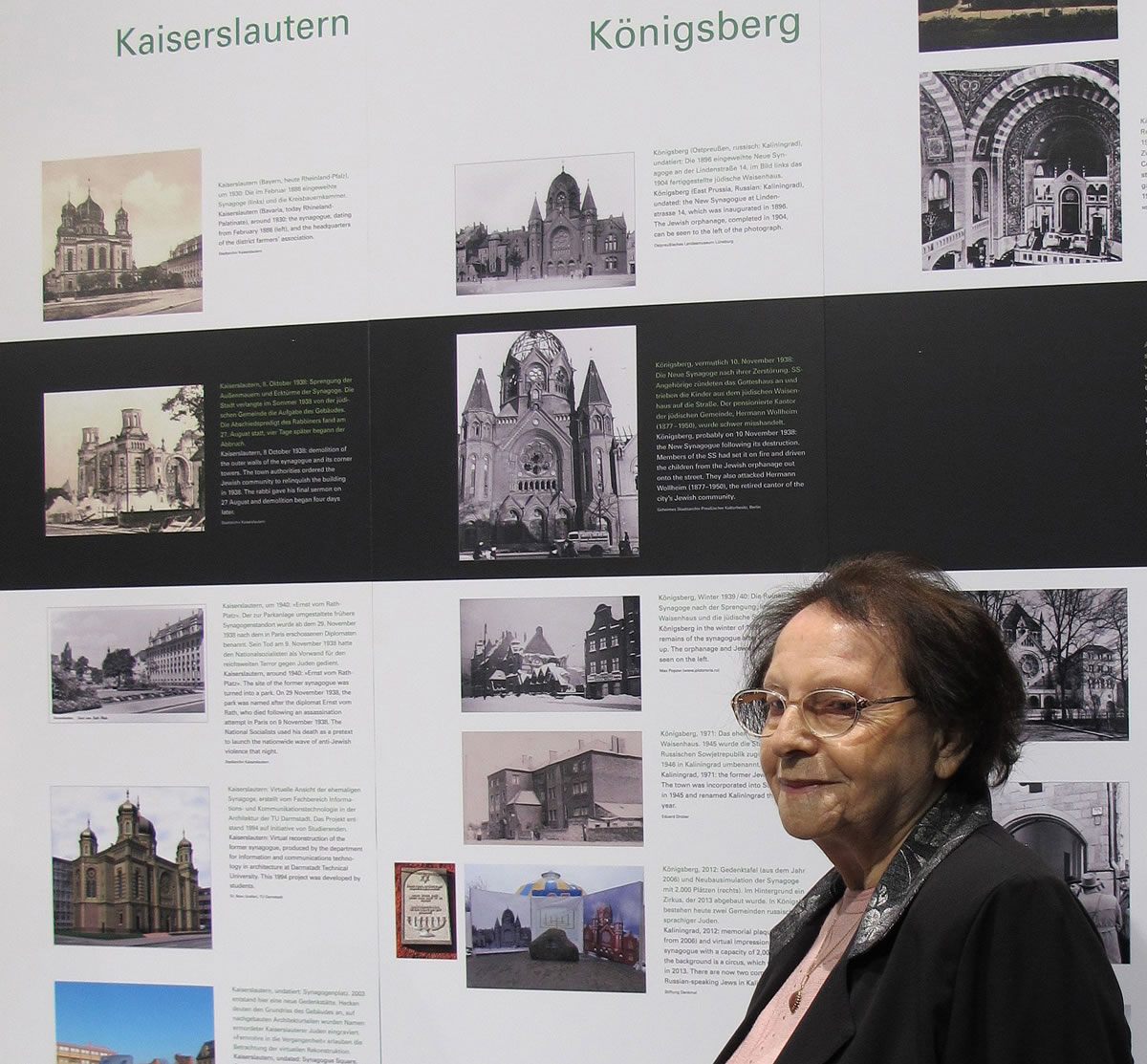BERLIN — Seventy-five years ago, Nechama Drober, a German Jew, looked out her bedroom window in the medieval port city of Koenigsberg to see her synagogue in flames.
Drober, now 86, recalls the horror. “The large temple with its golden cupola, it was the most beautiful synagogue I have ever seen.”
But she also remembers that it was only the beginning. “The next day, my dad was arrested, and our landlord evicted us. All I could think of was the song we had sung in summer camp the years before, ‘Jew, where in this world can you go?'”
Saturday marks the 75th anniversary of what Germans now call Reichspogromnacht, but which the rest of the world knows as calls Kristallnacht, or the Night of Broken Glass. By the time it was over, Nazi thugs had killed 91 Jews and taken 30,000 others prisoner, for deportation to concentration camps. Thousands of businesses and synagogues were burned or destroyed. It was far from the beginning of Nazi persecution of German Jews, but it is fair to say it was the beginning of the end, a single night of animalistic violence in Germany, Austria and the occupied region of Czechoslovakia.
It began Nov. 9, 1938, and bled over into the early hours of Nov. 10, and then into the next six and a half years. Nazi storm troopers kicked it off, smashing windows painted with “Jude” in white letters, battering some Jews. Others joined in, looting, taunting and spitting on the Jewish victims.
Deidre Berger, director of the American Jewish Committee in Berlin, works to ensure Germans don’t forget that night, and the descent into inhumanity it represented.
“It’s important to understand why the veneer of civilization was so easily cracked,” she said. She notes that there were many who stood against “this mass orgy of violence” against their longtime friends, neighbors and associates.
But there were more who joined in or stood by passively. That, she said, has to be an enduring lesson of Kristallnacht.
“It takes so little to tip the scales,” she said. “It really shows the fragility of political systems. In one night, so many who had grown up together, turned and attacked the dignity and the safety of their neighbors, laughed as they were arrested.”
At an event this week at the aptly named Topography of Terror documentation center built on the grounds of the Nazi Gestapo headquarters, Berlin Mayor Klaus Wowereit spoke about that lesson. Wowereit is openly gay, and while he did not make this point in his talk, Berliners know he, too, would have been targeted by the Nazis.
“At the same time, many neighbors remained indifferent, and I’m asking myself why over the years, so few came out and admitted: ‘I saw it, and looked the other way. Today, I am ashamed,’ ” he wondered about those who had witnessed the events.
German historian Joerg Friedrich said in an interview that that question has been asked many times before. He noted American slavery as an example, and the century of racial violence that followed. “The scale of what the Nazis did is without parallel, of course,” he said. “But the human nature it exposed, for that there are other examples.”
German reactions on Reichspogromnacht (the Germans changed the word to “Reich Massacre Night” fearing that “Night of the Broken Glass” didn’t adequately sum up the horror of that night) are little different from what is seen today during a subway mugging.
“Some were appalled and moved to act,” Friedrich said. “Most were passive.”
Andreas Nachama, a historian and director of Topography of Terror, said in a talk about the lessons learned that it’s too easy to dismiss the events of the Nazi madness as simply that, a period of insanity.
“The night of Nov. 9, 1938, not only the Germans stood and watched, but so did the world,” he said, noting that photos of what had happened, and news reports of the night, were published around the world. “That is why we need to confront the past, to learn how to respond and warn whenever similar things happen in the world.”



